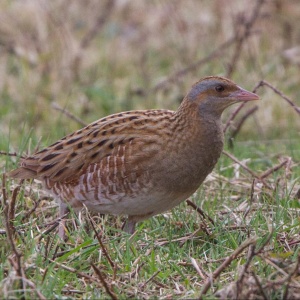
According to this study of farmland birds in Finland, bird abundance is positively correlated with the nearby presence of organic animal farms, as well as the percentage of nearby field cover and the presence of natural grasslands.
The results were based on bird observation data gathered by citizen scientists between 2008 and 2013. These observations were linked geographically with data on land use across 22 variables, such as number of livestock, area devoted to different crops, and area of fallow fields.
Some of the variables, such as fields being covered by stubble during the winter, land being actively managed to promote biodiversity, and organic animal or crop farms, represent activities subsidised by the European Union’s agri-environment-climate schemes. However, out of these subsidised land use types, only organic animal farms had a significant effect on bird abundance. That effect was stronger for bird species that eat insects (as opposed to grain), and stronger for long-distance migratory species than birds that do not migrate or only migrate over short distances.
Abstract
Agriculture is a primary driver of biodiversity loss worldwide, and several expensive schemes have been designed to make modern farming landscapes more hospitable for wildlife. One such market-based mechanisms is the agri-environment-climate schemes (AES) in the European Union (EU). AES compensate farmers for reducing land-use intensity and maintaining or introducing biodiversity-rich habitats. Despite their high costs, impacts of AES vary by measure, region and taxonomic group considered, and have rarely been studied over large areas covering an entire country. Here we assess the country-wide impact of several AES measures on bird abundance using citizen science data on birds and detailed information on AES take up from across Finland. We report a positive impact of organic animal farming on abundance of all farmland associated birds. This effect was particularly strong for insectivorous species, species that are associated to farmyards and long-distance species. None of the other AES measures considered for study did show any relationship with bird abundance. Overall, these findings highlight the potential positive impact that some compensatory measures, such as organic animal farming, may have on wildlife. Traditional animal husbandry is based on grazing of animals and restriction on external inputs, similarly to what is stipulated under organic production contract. As such, traditional animal husbandry may represent an effective landscape management tool for restoring or maintaining threatened species and ecosystems in rural areas of the EU. Ultimately, the apparent lack of a measurable effect of the other AES considered here supports the current move towards evidence-based regional targeting of compensatory measures, so as to concentrate scarce resources to where they can yield the highest ecological benefits.
Reference
Santangeli, A., Lehikoinen, A., Lindholm, T. and Herzon, I., 2019. Organic animal farms increase farmland bird abundance in the Boreal region. PloS one, 14(5), p.e0216009.
Read the full paper here. See also the Foodsource resource How do food systems affect land-use and biodiversity?







Post a new comment »